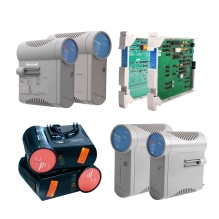Unlock the Secret to Choosing the Perfect Single Phase Variable Frequency Drive!
Single phase variable frequency drives (VFDs) are essential components in modern motor control applications, allowing users to adjust the speed and torque of electric motors with precision and efficiency. These devices are widely used in various industries, from HVAC systems and pumps to conveyors and home appliances. However, with the multitude of options available in the market, selecting the right VFD can be a daunting task. This article aims to simplify the decision-making process by guiding you through the key factors to consider, comparing different models, and highlighting common pitfalls to avoid. By the end, you’ll have a clearer understanding of how to find the perfect single phase VFD tailored to your specific needs.

Understanding Single Phase Variable Frequency Drives
A single phase VFD is a device that converts fixed frequency electrical power into variable frequency power, enabling the control of motor speed and torque. Unlike three-phase drives, which are commonly used in industrial applications, single phase VFDs are designed for residential and light commercial use, making them perfect for smaller motors that operate on single-phase power. Their primary function is to adjust the frequency and voltage supplied to the motor, allowing for smoother operation, energy savings, and reduced wear and tear on the equipment. The advantages of single phase VFDs include their compact size, ease of installation, and compatibility with a range of applications, from fans and blowers to small machinery. Understanding these functionalities is crucial for anyone looking to integrate a VFD into their system.
Key Factors to Consider When Choosing a Single Phase VFD
When selecting a single phase VFD, several key factors should guide your decision. First and foremost is the power rating of the VFD, which must match the power requirements of your motor. Additionally, voltage compatibility is essential; ensure that the VFD operates within the voltage range of your electrical supply. Control methods are another vital consideration: you may prefer a simple potentiometer control or a more sophisticated method like PID (proportional-integral-derivative) control, depending on your application. Efficiency ratings also play a significant role in long-term operational costs, so look for models that offer high efficiency to reduce energy consumption. To assess these factors effectively, consider your specific application requirements, the environment in which the VFD will operate, and any future scalability needs.
Comparing Different Options for Single Phase VFDs
The market is filled with various single phase VFD options, each boasting unique features and specifications. When comparing models, look for key performance metrics such as maximum output frequency, acceleration/deceleration times, and overload capacity. Some VFDs may include built-in protection features like short-circuit protection and thermal overload protection, which can be invaluable in safeguarding your equipment. It’s also worth considering additional functionalities like built-in programming capabilities or communication interfaces for integration with other systems. Understanding your application is paramount; for instance, a VFD used in a fan application might require different specifications compared to one used for a pump. Therefore, detailed comparisons based on your specific needs can help you make an informed choice.
Common Mistakes to Avoid When Purchasing a Single Phase VFD
Many buyers encounter pitfalls when selecting a single phase VFD that can lead to inadequate performance or compatibility issues. One common mistake is overlooking the compatibility of the VFD with existing equipment; always ensure that the specifications align with your motor and electrical supply. Misjudging power requirements is another trap—purchasing a VFD that is either underpowered or overpowered can lead to inefficiencies and operational challenges. Additionally, don’t underestimate the importance of technical support; a VFD is an intricate device, and having access to knowledgeable support can be crucial for troubleshooting and maintenance. By avoiding these missteps, you can save time, money, and frustration in your purchasing journey.
Making an Informed Choice
Choosing the right single phase VFD is a significant decision that can greatly impact your motor control system's efficiency and performance. By understanding the functionalities of single phase VFDs, considering key selection criteria, and comparing various options, you are better equipped to make an informed choice. Remember to conduct thorough research and take into account your specific application needs to avoid common pitfalls. With the right VFD in hand, you'll be well on your way to optimizing your motor operations, enhancing energy efficiency, and extending the lifespan of your equipment. Take the next steps in your purchasing journey with confidence!







